How to make your meat go further – delicious recipes which use up every morsel
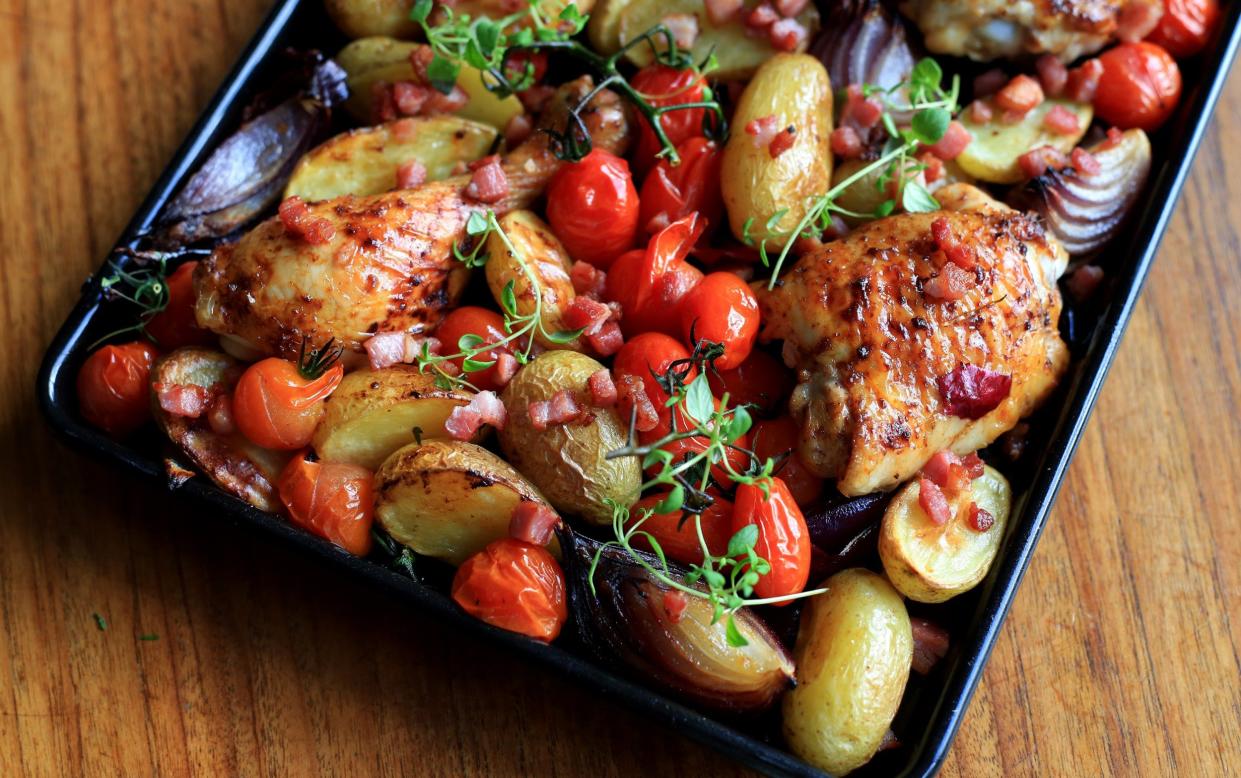
Meat is suffering from an image problem. Figures suggest that meat consumption is at its lowest since the 1970s, with the cost of living crisis and rising prices at the heart of this shift towards vegetarianism, veganism and general flexitarianism.
Beef, pork and lamb have been ditched more than other meats (consumption of them is down 26 per cent over the past decade), but the amount of meat we eat in general at home is 14 per cent lower than in 2012.
According to the Waitrose Cooking Report, as a nation we’ve learned to tighten our belts in the kitchen. Over a third of us choose to cook from scratch, believing it helps us to “stick to a budget and save money”. The supermarket has seen a rise in sales of food basics such as tinned pulses and frozen veg, as well as increases in cheaper cuts of meat such as lamb breast, stewing lamb, pork belly and chicken wings.
For those of us who still enjoy eating meat, switching to cheaper cuts is certainly the first place to start – but there are also creative ways to make our favourite, if pricier, products stretch even further.
In my house we eat meat on average three to four days a week, but these days in smaller amounts to flavour a dish rather than have it as the star of the show.
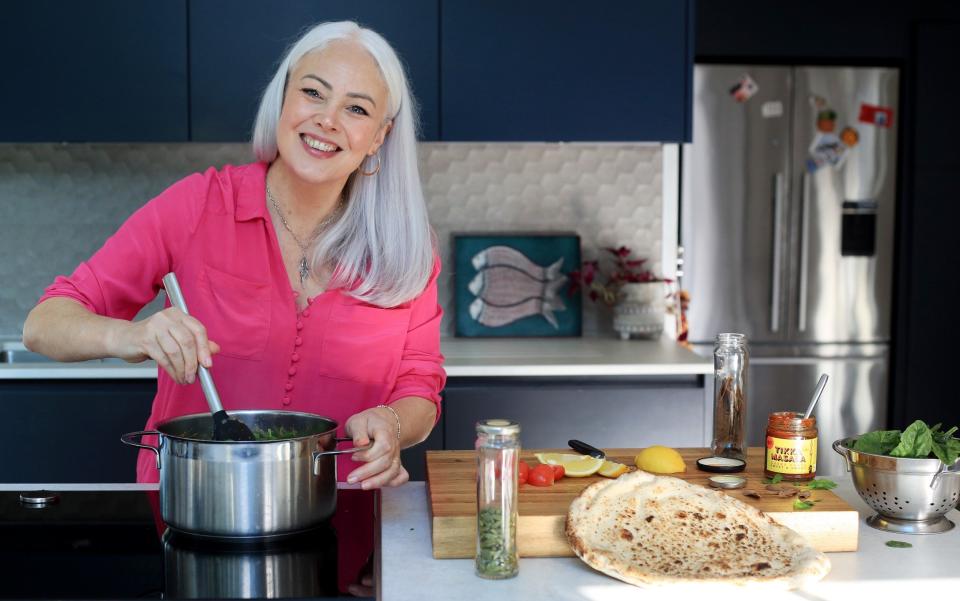
I also batch cook when I get the chance, making at least double the quantity, which saves money in the supermarket as well as time spent at the hob. Planning multiple meals from one chicken, making a big-batch stew with beef or stretching out a cut of lamb in a curry to feed the family all helps to make your meat go further.
Skip to:
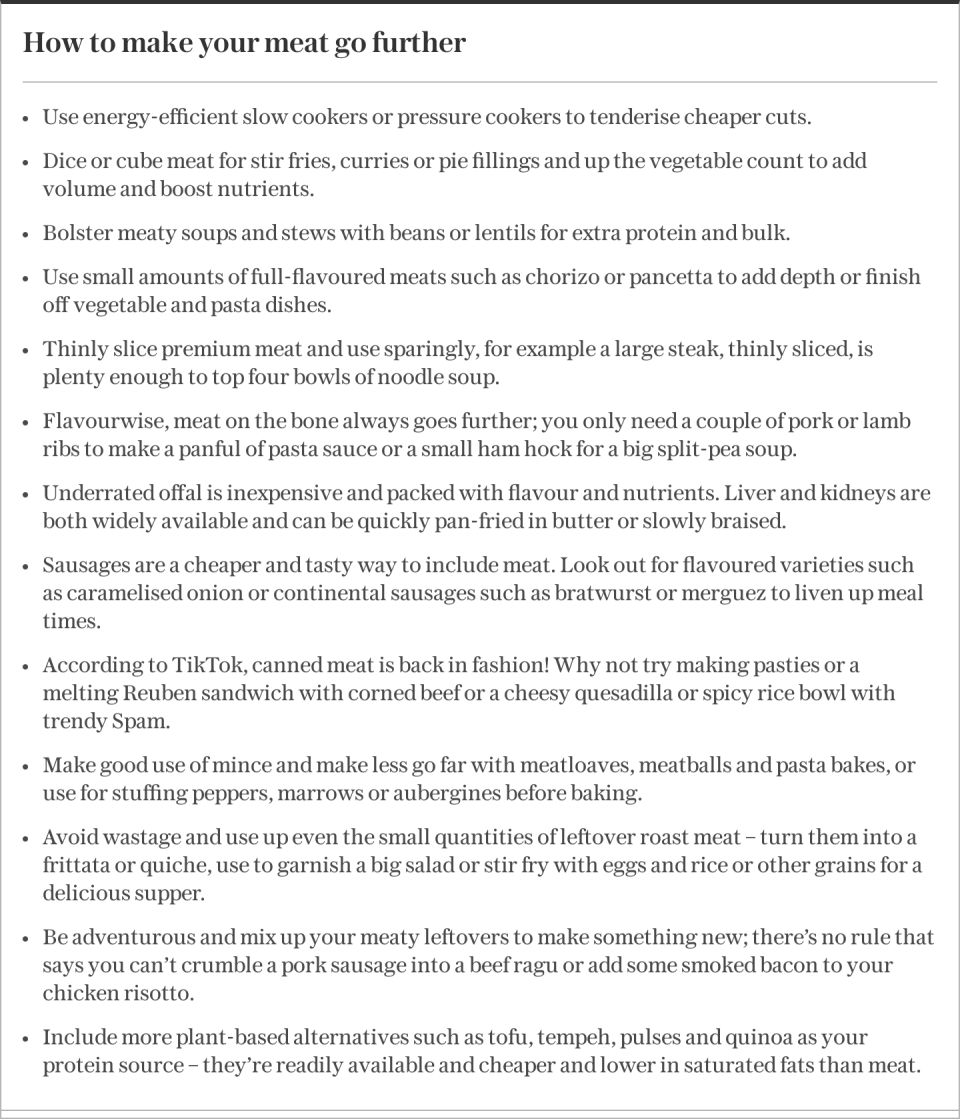
The most economic way to eat chicken
Love British Food states that more than 40 per cent of the meat we eat in Britain is chicken, making it the nation’s favourite flesh by far – but what’s the most efficient way to buy and cook it?
Chicken breast fillets are the priciest cut, frequently costing almost as much as a whole bird. So, rather than splash out on them separately, opt for the whole thing. One large bird, once portioned, is comfortably able to stretch to three meals for a family of four and allows you to make good use of every part, including the carcass and wings for stock or soup.
Preparing a chicken is straightforward and, even if your efforts aren’t as neat as you’d like, there’s no need to worry as they won’t be noticeable in the finished dish. And if you find you’ve left too much meat on the carcass, then it’ll just make for an even tastier broth.
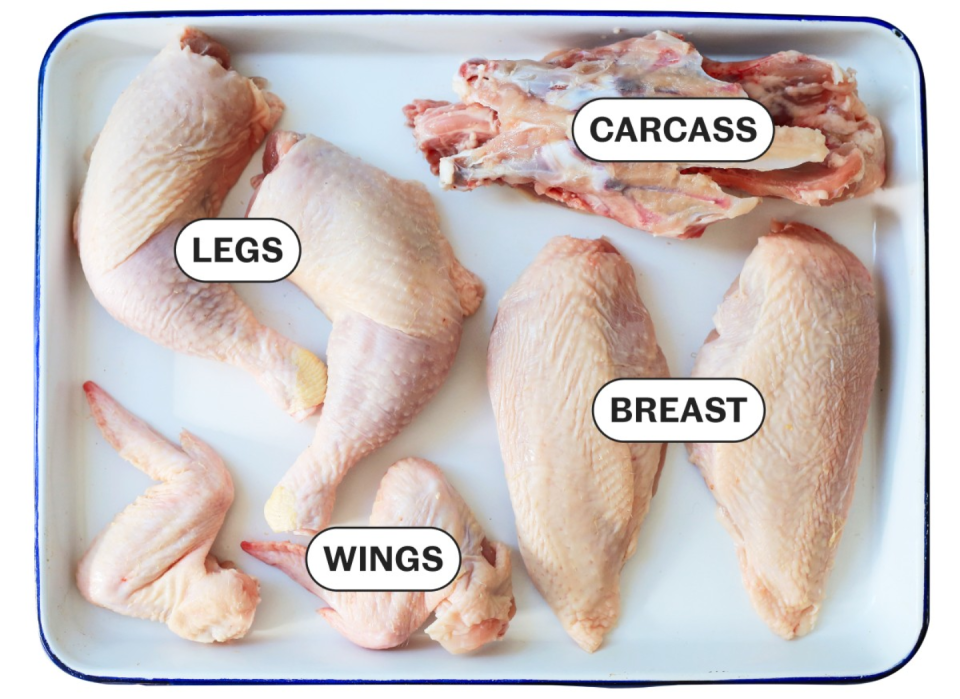
How to joint a chicken
Begin by removing the legs. Cut through the skin then twist the leg back to break the socket joint. Using a sharp knife, slice each leg away from the body, cutting through the broken joint and around the “oyster” on the underside of the chicken.
Next, remove the wings by finding the joint and cutting through it on both sides. If using for stock, there’s no need to remove the wing tip.
Cut down the side of the breastbone, to release the breasts on either side, staying as close to the ribcage as possible. Trim the fat from the breasts.
Chicken breasts
Make two breasts go a long way by slicing thinly and stir frying with plenty of vegetables or with sliced peppers, onions and spices to serve as sizzling fajitas.
Or try:
Chicken schnitzels
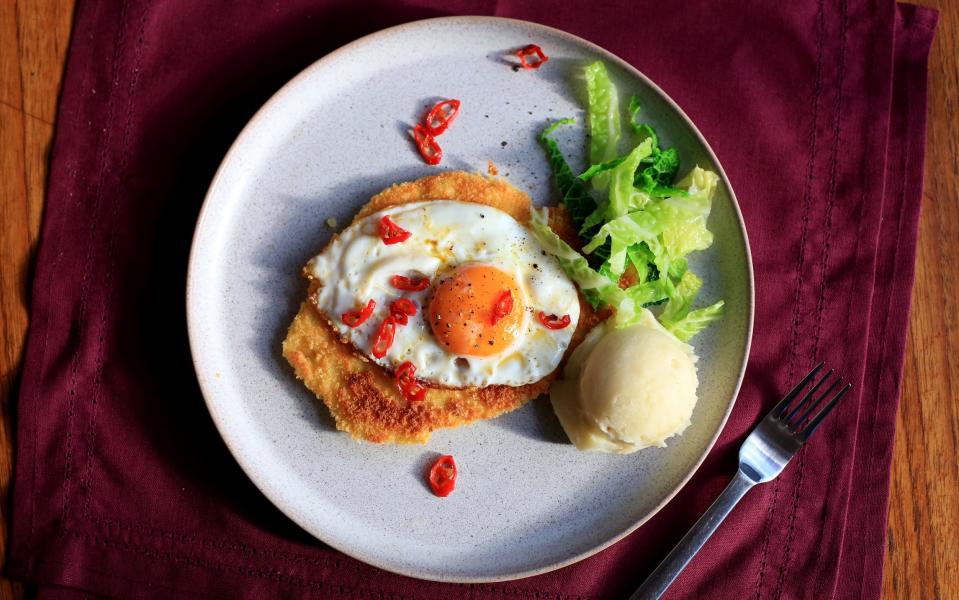
To make a substantial meal for four from two chicken breasts, cut the fillets in half horizontally and bat them out between two pieces of parchment until 2-3mm thick.
Dust with seasoned flour then dip into beaten egg and then into a mix of breadcrumbs and finely grated parmesan. Fry until golden and cooked through and serve with creamy mash and an egg fried with a little chilli.
Legs
To serve four, turn over the legs and separate the thighs from the drumsticks by locating and cutting through the joint. Leg pieces have good flavour and are great for simple one-pot dishes such as a slowly braised coq au vin or for roasting alongside vegetables in easy traybakes.
Or try:
Harissa chicken, potato and cherry tomato tray bake
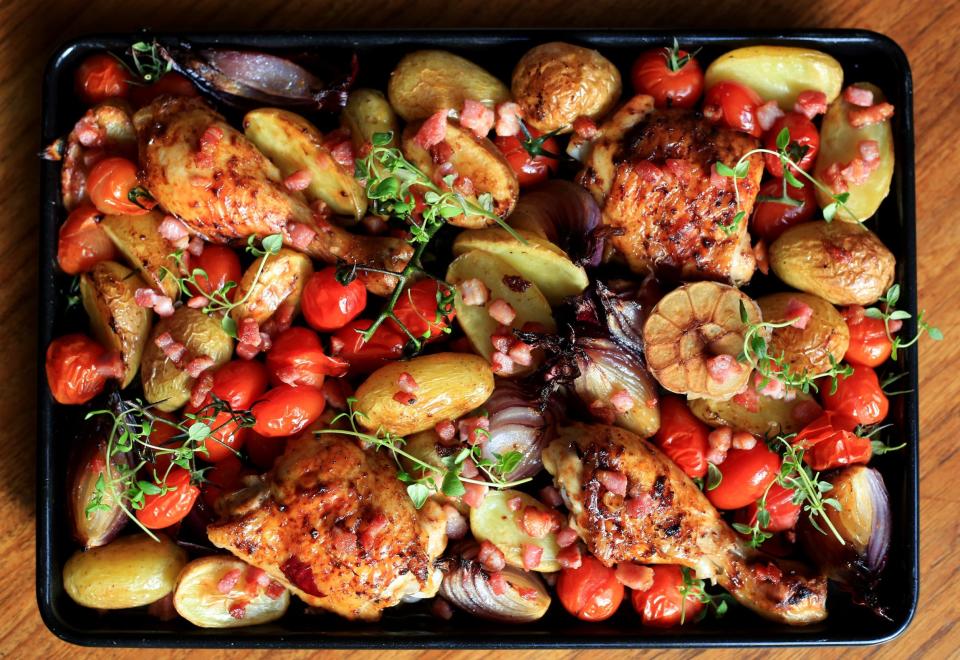
Coat the chicken pieces in harissa paste and place in a large baking tray with 750g baby new potatoes and two red onions, cut into wedges.
Roast at 200C/180C fan/gas mark 6 for 20 minutes then add a halved garlic bulb and 250g cherry tomatoes. Drizzle with oil, season and return to the oven for 15 minutes.
Scatter over some chopped smoked bacon and thyme sprigs and return to the oven for further 10 minutes or so until golden brown and cooked through. Good with a bowl of rocket leaves on the side.
Carcass and wings
Make a fabulous fresh chicken stock for using in soups and stews. Place the carcass and chicken wings in a large saucepan with a thickly sliced carrot, celery stalk and a leek, if you have one to hand.
Add a quartered onion, two whole garlic cloves, a couple of halved tomatoes and a few sprigs of herbs such as rosemary, thyme, parsley or a couple of bay leaves. Add a large pinch of salt and a couple of peppercorns and cover with 2½ litres of water.
Bring to the boil and simmer for 2-3 hours, skimming any residue from the surface. Pass through a sieve and if you wish, shred any remaining pieces of meat from the carcass and wings and return to the stock. It will keep in the fridge for up to five days and freezes beautifully.
Then try:
Chunky minestrone
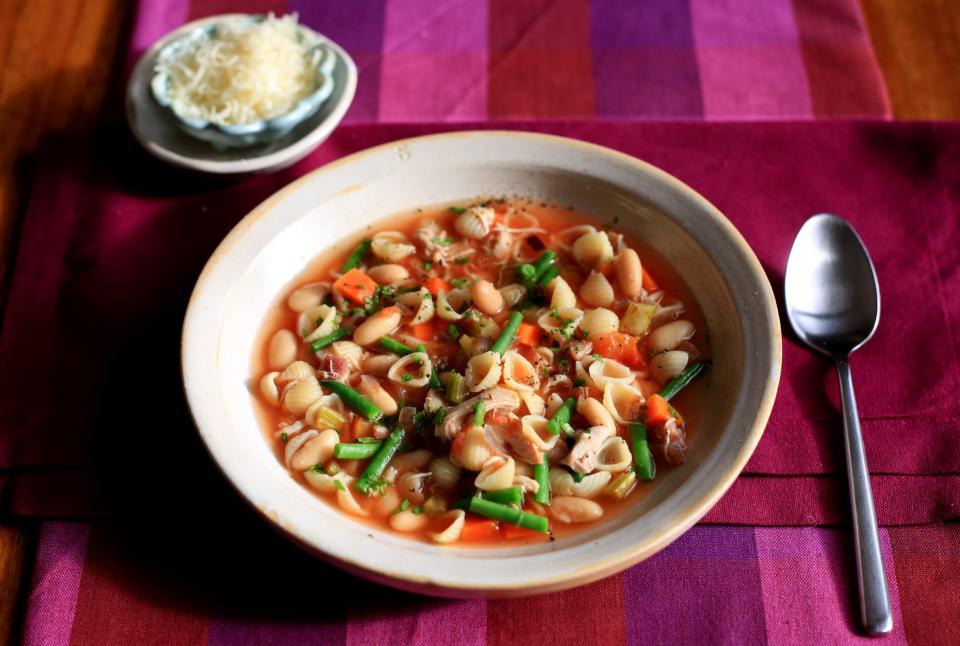
Turn your fresh chicken stock into a satisfying meal. Heat some olive oil in a large saucepan and gently fry a chopped red onion, celery stalk, carrot and some chopped bacon for 10 minutes until softened.
Add a 400g can each of finely chopped tomatoes and cannellini beans and 1.2 litres of the fresh chicken stock. Simmer for 30 minutes then add 100g small pasta shapes or broken spaghetti and 100g green beans, cut into 2cm lengths and cook for 10 minutes until the pasta is tender.
Stir in some finely chopped parsley then ladle into bowls and serve with black pepper and parmesan.
How to use cheaper cuts
Beef stewing steak
Large pieces of stewing or braising steak are an economical choice and can be cut into chunky pieces for casseroles or cut more finely for a warming chilli or ragu.
It’s a great time of year to get your slow-cooker out of storage as not only is it one of the most energy efficient appliances, it’s brilliant for tenderising tough cuts with little effort.
Slow cooker beef stew with herby dumplings
As there’s no evaporation, you’ll need less liquid than in a standard stew. Mix 500ml beef stock (swap 150ml of the stock for red wine, if you like), 2 tsp cornflour and 1 tbsp Worcestershire sauce in a slow cooker and turn on to high. Add 400g cubed stewing steak, 2 thickly sliced leeks, 4 thickly sliced carrots, 250g mushrooms and 2 bay leaves.
Cook on high for 5 hours or low for 8, skimming any residue that rises to the surface.To make large dumplings, stir together 125g suet, 200g self-raising flour, ½ tsp salt and chopped fresh herbs such as parsley, sage and/or thyme.
If you like, add a handful of grated cheddar or gruyere then mix in enough cold water (125-150ml), to make a firm dough. Roll into 8 balls and place on top of the stew. Cover and cook for a further 1 hour or so until the dumplings are puffed.
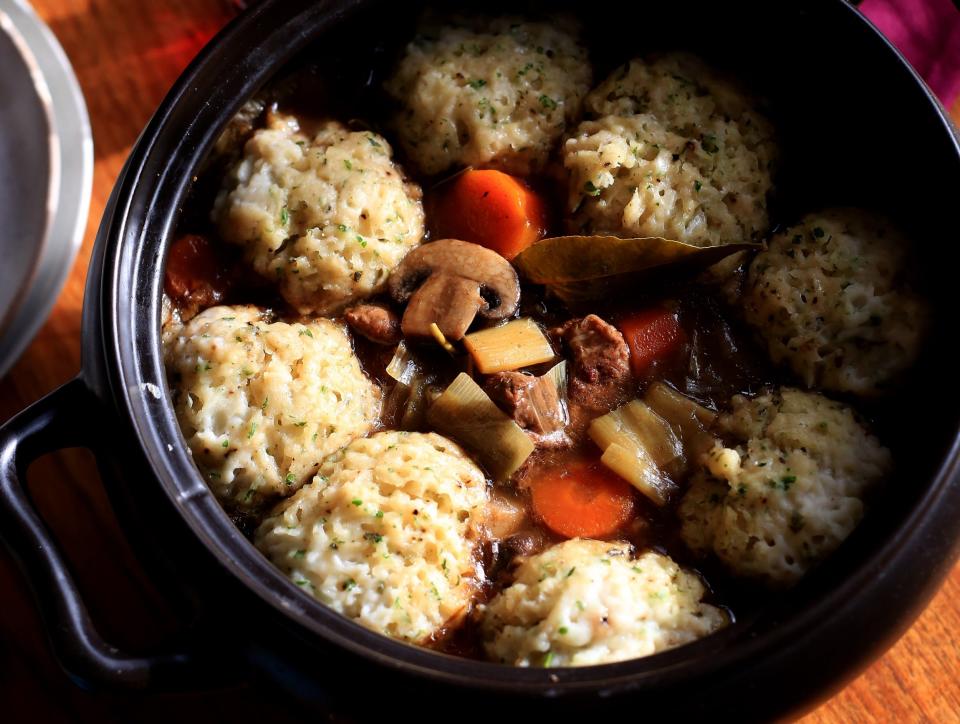
Pork mince
One of the cheapest and most versatile cuts, ground mince is great for speedy cooking such as quick burgers and stir fries as well as cooking gently into cottage pie filling, lasagne or meatballs.
Sichuan-style pork mince and tofu
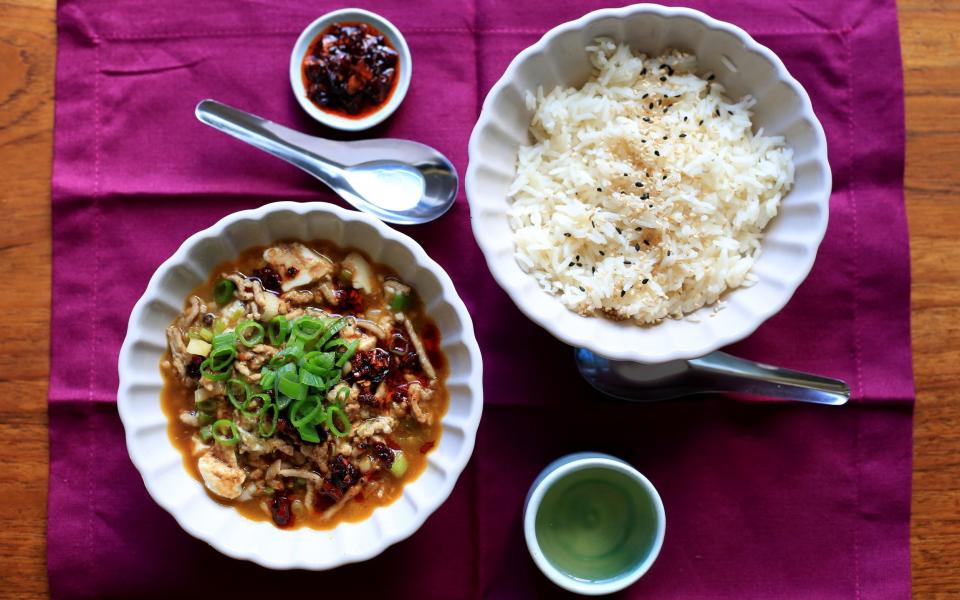
A smaller quantity of lean pork is matched with the additional protein and silky texture of soft tofu in this spicy dish traditionally known as Mapo tofu.
Heat 2 tbsp sunflower oil in a wok and cook 2 grated garlic cloves, a tablespoon of grated ginger, ½ tsp chilli flakes and ½ tsp crushed sichuan peppercorns until sizzling. Add 250g minced pork and cook for 4-5 minutes until nicely browned. Slice a bunch of spring onions and add the whites to the pan along with 200ml warm chicken stock.
Cook for a minute or so, scraping bottom of pan with a wooden spoon to loosen any stuck meat, then add 250g diced silken tofu. Cook for 3-4 minutes, stirring once or twice until the tofu is warmed through. Add soy sauce to taste, then scatter over the spring onion greens and serve with rice and crispy chilli oil.
Diced lamb shoulder
With a higher proportion of fat, lamb shoulder is usually cheaper and more flavoursome than leaner leg meat. It’s great for slow cooking into tagines, stews and curries.
Lamb, chickpea and spinach curry
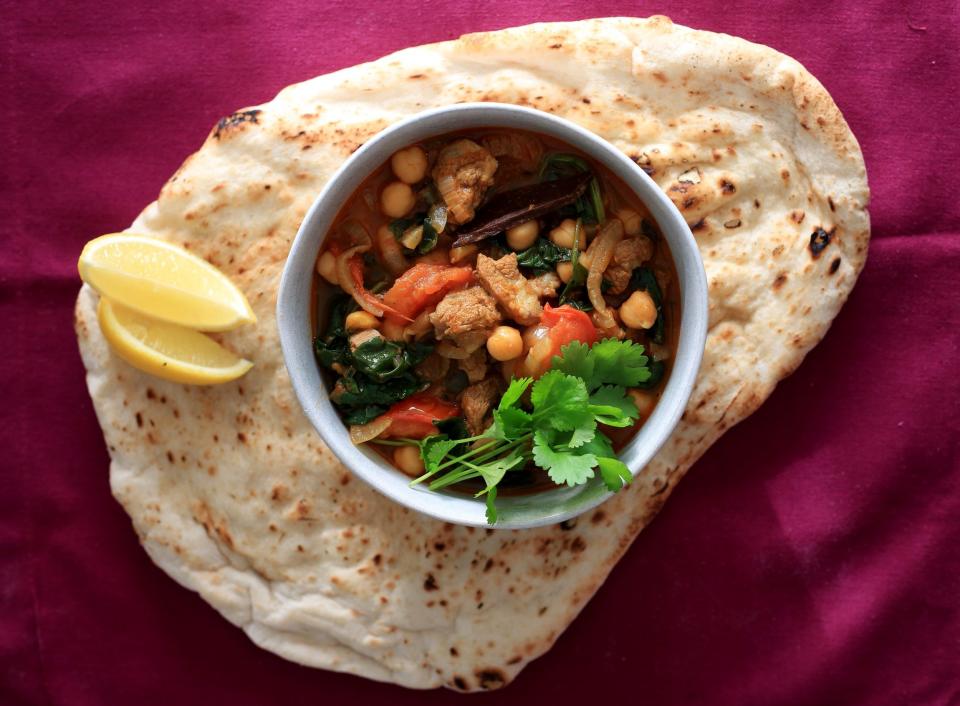
Mix together the 300g diced lamb shoulder and 3 tbsp curry paste and leave to marinate for 1 hour or overnight. Meanwhile, heat 1 tbsp sunflower oil in a large saucepan and cook 2 sliced onions with 1 cinnamon stick and 3-4 cracked cardamom pods for 5 minutes.
Add the marinated lamb and cook, stirring until browned all over. Add 450ml lamb stock, 5-6 tomatoes, quartered and a 400g can of drained chickpeas. Cover and simmer gently for an hour or two until the lamb is very tender. Add 250g baby spinach, stirring until wilted. Check the seasoning and serve with lemon wedges and warm naan.

